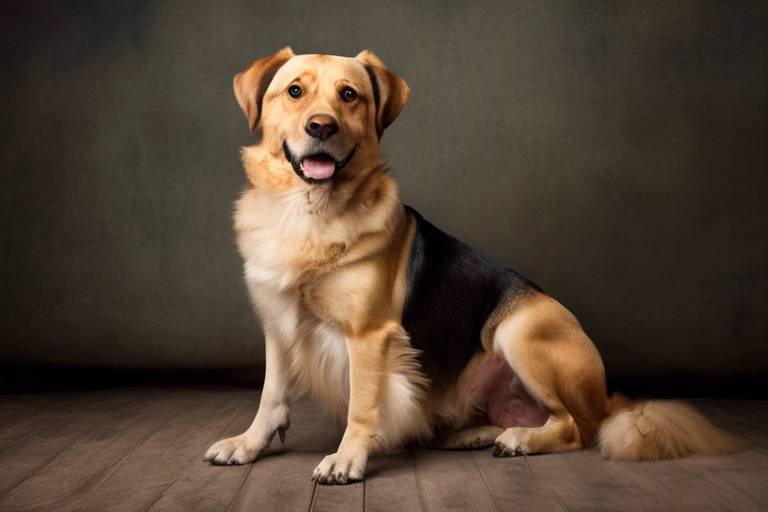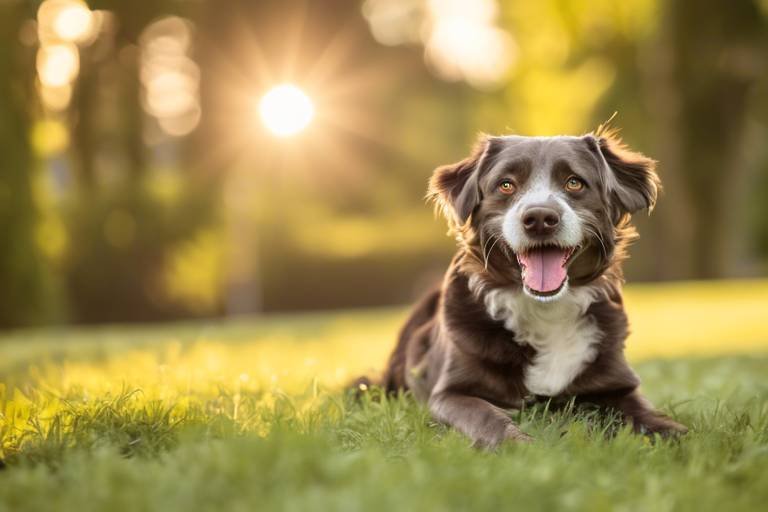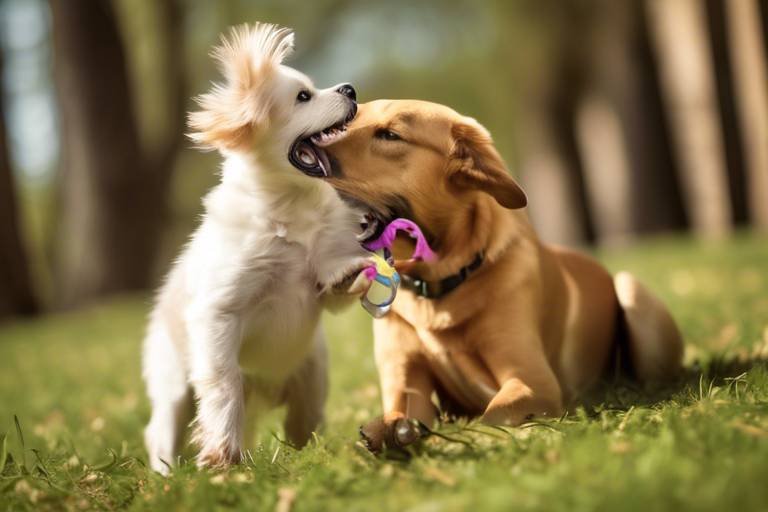How to Address Anxiety in Pets During Storms
Stormy weather can be a real nightmare for our furry friends. Imagine being suddenly surrounded by loud booms and flashes of light, and you can understand why pets might feel anxious during storms. It's not just about the rain; it's the whole chaotic experience that can send their little hearts racing. As pet owners, it’s our duty to ensure their comfort and well-being during these stressful situations. In this article, we’ll explore effective strategies and techniques to help alleviate anxiety in pets during storms, making those stormy nights a little less scary.
Recognizing the signs of anxiety in pets is crucial. Just like us, our pets can experience fear and stress, especially during thunderstorms. Common symptoms include whining, panting, and restlessness. Some pets may even try to hide or escape, seeking comfort in small spaces. Others might engage in destructive behavior, like chewing furniture or scratching at doors. Understanding these behaviors is key to addressing their anxiety effectively. When you notice these signs, it’s important to act swiftly to help your pet feel safe and secure.
Designing a cozy and secure environment can greatly reduce anxiety. Think of it as creating a little sanctuary for your pet. This space should be away from windows and loud noises, providing a sense of security. A safe space can be a small room, a closet, or even a designated corner with their favorite blanket. The goal is to make it a comforting retreat where your pet can curl up and feel protected during the storm.
Selecting an appropriate area in your home is essential. Ideally, you want to find a spot that feels enclosed and protected. Consider areas like:
- Basements or lower levels of your home
- Inside a closet with their favorite items
- A quiet room away from windows
When choosing the location, pay attention to your pet's behavior. They often gravitate towards places where they feel safe, so follow their lead!
Incorporating familiar items can ease anxiety. Think of comfort items as the security blanket for your pet. Items like their favorite toys, a soft blanket, or even an old piece of clothing can provide a sense of familiarity. The smell of these items can be incredibly soothing, helping to calm their nerves. You might also consider adding a cozy bed or a crate where they can retreat when feeling overwhelmed.
Minimizing noise can significantly reduce stress. To create a quieter environment, you can:
- Close windows and doors to block out thunder sounds
- Use heavy curtains to dampen noise
- Play soft music or white noise to mask the storm sounds
These soundproofing techniques can make a world of difference, helping your pet feel more at ease during a storm.
Implementing calming techniques can make a difference. Just like a gentle massage can soothe a person, it can do wonders for your pet too. Try giving them a gentle rubdown or using a calming voice to reassure them. You can also practice breathing exercises—yes, pets can benefit from this too! Slow, deep breaths can help calm both you and your pet, creating a serene atmosphere amidst the chaos outside.
Numerous products are available to assist pets with anxiety. From pheromone diffusers that mimic calming scents to calming collars infused with natural ingredients, there are plenty of options out there. Supplements like melatonin can also help, but always consult with your veterinarian before introducing anything new to your pet's routine. The right product can be a game-changer, providing that extra layer of comfort during a storm.
Seeking professional advice is often beneficial. If your pet experiences severe anxiety, it’s a good idea to consult with a veterinarian. They can provide tailored recommendations and discuss potential medication options that can help your pet cope better with storm-related stress. Remember, you’re not alone in this; your vet is there to help you find the best solutions for your furry friend.
Training can help pets manage their anxiety. Consider implementing gradual desensitization techniques, where you expose your pet to storm sounds at a low volume while rewarding them for calm behavior. Over time, this can help them associate storms with positive experiences rather than fear. Consistency is key, so make sure to practice regularly to reinforce their learning.
Q: Can I leave my pet alone during a storm?
A: It’s best to stay with your pet if possible. Your presence can provide comfort and reassurance.
Q: Are there any natural remedies for pet anxiety?
A: Yes! Natural remedies include calming treats, herbal supplements, and pheromone products that can help soothe anxious pets.
Q: What if my pet's anxiety is severe?
A: If your pet shows signs of severe anxiety, consult with your veterinarian for tailored advice and potential medication options.
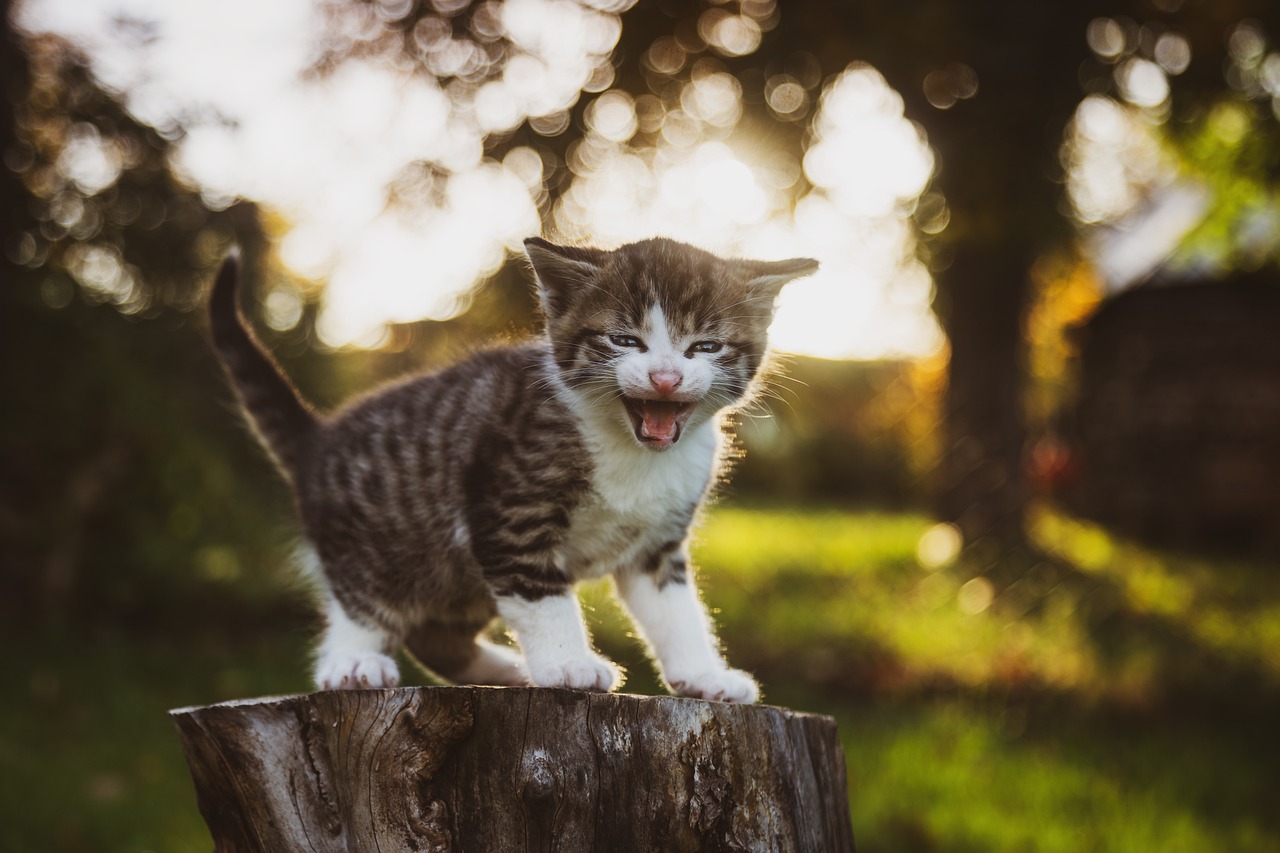
Understanding Pet Anxiety
Recognizing pet anxiety is the first step toward helping your furry friend feel more at ease, especially during those nerve-wracking storms. Just like humans, pets can experience anxiety, and it can manifest in various ways. Have you ever noticed your dog trembling, hiding, or even barking excessively when the thunder rolls in? These behaviors are more than just quirks; they are signs that your pet is feeling stressed and overwhelmed. Common symptoms of anxiety in pets include:
- Excessive barking or whining: This vocalization can be a clear indication that your pet is feeling anxious.
- Hiding or seeking isolation: Many pets will retreat to a safe spot, such as under the bed or in a closet, when they feel scared.
- Pacing or restlessness: If your pet can't seem to settle down, it might be a sign of anxiety.
- Destructive behavior: Chewing furniture or scratching at doors can be a result of pent-up stress.
- Changes in appetite: Some pets may refuse to eat, while others might overeat as a coping mechanism.
Understanding these signs is crucial because it allows you to take proactive measures to alleviate your pet's discomfort. Consider how you feel during a thunderstorm—it's loud, unpredictable, and can make anyone feel on edge. Now, imagine experiencing that same fear but without the ability to understand what's happening. Your pet relies on you to provide comfort and security during these stressful times.
Moreover, it's essential to remember that different pets react to anxiety in different ways. For example, a cat might choose to hide in a dark corner, while a dog may bark incessantly at the window. By observing your pet's unique behaviors, you can tailor your approach to help them feel more secure. If you notice that your pet exhibits signs of anxiety not just during storms but in other situations as well, it might be worth exploring further behavioral training or consulting a veterinarian.
In summary, recognizing the signs of pet anxiety is not just about being aware; it's about taking action. By understanding what your pet is going through, you can create a supportive environment that helps them feel safe and loved. Remember, your pet looks to you for reassurance, so being attuned to their needs is vital in fostering a calm atmosphere during tumultuous weather.

Creating a Safe Space
When storms roll in, the last thing you want is for your furry friend to feel anxious and scared. One of the most effective ways to help your pet cope with storm anxiety is by creating a safe space where they can feel secure and comfortable. Think of this space as a cozy little sanctuary, a retreat from the chaos outside. But how do you go about designing this haven for your pet? Let's dive into some key elements that will make this safe space a true refuge.
First things first, location is everything! You want to pick a spot in your home that is away from windows and doors, where the sounds of thunder and rain are muffled. A basement or an interior room can work wonders. Imagine it as a fortress against the storm—quiet, dark, and snug. If your pet has a favorite corner or a spot where they usually curl up, that could be the perfect place to set up their safe space. You want them to feel like they’re in their own little world, away from the noise and fear.
Now that you have the location sorted, it’s time to fill this space with comfort items. Familiarity is key! Including your pet's favorite blanket, a soft bed, or even a few of their beloved toys can provide a sense of security. Think of it as packing a comforting bag for a trip—having those cherished items around can make all the difference. Additionally, consider adding:
- A cozy blanket that smells like you
- Chew toys that can distract them from the noise
- A piece of your clothing to provide comfort
By surrounding your pet with these familiar objects, you’re helping to create an atmosphere of safety and reassurance.
Let’s not forget about noise! Storms can be loud, and that can really amplify your pet’s anxiety. To minimize the sound, you can use heavy curtains or blankets to cover windows and doors. It’s like building a sound barrier around your pet’s safe space. Additionally, consider playing some calming music or using a white noise machine to drown out the storm sounds. This can help create a more serene environment, making your pet feel like they’re in a bubble of tranquility.
Creating a safe space for your pet during storms is not just about physical comfort; it's about emotional reassurance. By combining the right location, comfort items, and soundproofing techniques, you can significantly reduce your pet's anxiety. Remember, this space should be a reflection of your pet’s personality and preferences. The more effort you put into making it a cozy haven, the more your furry friend will appreciate it during those stormy nights.
Choosing the Right Location
When it comes to helping your furry friend feel safe during a storm, the location you choose can make all the difference. Think of it as creating a personal sanctuary for your pet, a place that feels like a cozy hideaway amidst the chaos outside. The right spot should be away from windows and doors, where the sounds of thunder and howling wind are muffled. Ideally, you want to find a location that feels secure and protected for your pet, allowing them to relax instead of feeling trapped.
One effective strategy is to identify a room in your home that is naturally quieter and less exposed to the elements. This could be a basement, a bathroom, or even a small closet. These spaces can serve as a comforting retreat where your pet can curl up and feel safe. You might also want to consider the following factors when selecting the perfect location:
- Noise Levels: Choose a room that is away from the main noise sources in your home, such as the living room where the TV might be blaring or where family members congregate.
- Temperature Control: Ensure that the area is comfortable in terms of temperature. Pets can become more anxious if they are too hot or too cold.
- Accessibility: Make sure the location is easily accessible for your pet, especially if they are older or have mobility issues.
Once you've identified a suitable spot, it’s time to make it feel like home. Adding some of your pet’s favorite items can help create a sense of familiarity. Think about incorporating a soft bed or blanket that smells like you, as well as their favorite toys. These comfort items can act as emotional anchors, helping to ease their anxiety. It’s like giving them a comforting hug when they need it the most!
In addition to comfort items, consider using soundproofing techniques to enhance the sanctuary effect. For instance, you can hang heavy curtains or blankets over windows to muffle the sound of thunder. Placing rugs or carpets on the floor can also help absorb noise. The goal is to create a calm and serene environment that allows your pet to feel secure and at ease.
Remember, every pet is different, and it might take some trial and error to find the ideal spot. Pay attention to your pet’s reactions and adjust accordingly. With a little patience and creativity, you can create a safe haven that will help your pet weather the storm—both literally and figuratively!
1. How can I tell if my pet is anxious during a storm?
Look for signs such as excessive barking, hiding, pacing, or destructive behavior. If your pet is trembling or trying to escape, they are likely feeling anxious.
2. Should I stay with my pet during a storm?
Yes, your presence can be very comforting to your pet. Try to stay calm and reassuring, as pets can pick up on your emotions.
3. Can I use calming music to help my pet?
Absolutely! Playing soft, soothing music can help mask the sounds of thunder and create a more relaxing environment for your pet.
4. What if my pet's anxiety is severe?
If your pet experiences severe anxiety, it is advisable to consult with a veterinarian. They can recommend appropriate treatments or medications to help.
Comfort Items to Include
When storms roll in, they can be a source of significant stress for our furry friends. One of the best ways to help ease their anxiety is by surrounding them with familiar and comforting items. Think of it as creating a cozy little sanctuary where your pet can retreat and feel safe. Just like we have our favorite blankets or childhood toys that make us feel better during tough times, pets also benefit from their own comfort items.
First and foremost, consider including a soft blanket. A blanket that smells like you or is often used can provide a sense of security. It wraps them in warmth, much like a comforting hug. You might also want to add their favorite toy. Whether it's a squeaky toy or a plush companion, having something they love close by can distract them from the noise of thunder. If your pet has a specific toy they gravitate toward, make sure it’s within reach during stormy weather.
Another great addition is a calming bed. These beds are designed to provide extra comfort and support, often featuring raised edges that mimic a den-like environment. This can help your pet feel more secure, as if they are snuggled in their own little hideaway. If you don’t have a calming bed, any bed or soft space that your pet is used to will work just fine.
Additionally, consider using clothing like a snug-fitting T-shirt or a specially designed anxiety wrap. These items can provide a gentle, constant pressure that mimics the feeling of being held, which can be incredibly soothing for pets experiencing anxiety. Make sure it's not too tight; it should feel like a comforting hug rather than a restriction.
Lastly, don't forget about familiar scents. You can use a piece of your clothing or a blanket that has your scent on it. This can help calm your pet by reminding them of your presence, even when you’re not right next to them. Incorporating these comfort items creates a multi-sensory environment that can significantly alleviate anxiety during storms.
In summary, creating a safe and comforting space for your pet during storms involves more than just a cozy corner. It's about surrounding them with items that evoke feelings of safety and familiarity. By providing these comfort items, you not only help soothe their anxiety but also strengthen the bond between you and your beloved pet.
- What are the signs of anxiety in pets during storms? Look for behaviors such as excessive barking, hiding, trembling, or attempts to escape.
- How can I help my pet feel more secure during a storm? Create a safe space with comfort items, and consider using calming techniques or products.
- Are there specific toys that are better for anxious pets? Soft, plush toys or toys that make soothing sounds can be particularly helpful.
- Should I consult a veterinarian for my pet's storm anxiety? Absolutely! They can provide tailored advice and may suggest medication if necessary.
Soundproofing Techniques
When storms roll in, the last thing you want is for your furry friend to be overwhelmed by the cacophony of thunder, rain, and wind. Just like how we might seek refuge in a cozy blanket fort during a storm, your pet deserves a tranquil sanctuary to ride out the tempest. Soundproofing your home can significantly help reduce the stress caused by loud noises, creating a peaceful environment for your beloved companion.
One effective method to soundproof your space is by using heavy curtains or sound-absorbing panels. These can help muffle the sound of thunder and rain hitting the windows. Think of it as giving your pet a cozy, soundproof cave where they can feel safe and secure. You can also consider placing rugs or carpets on the floor, as these materials can absorb sound, further softening the noise that might reach your pet’s ears.
Another technique is to create a barrier between your pet and the source of the noise. This can be achieved by moving furniture, such as sofas or bookshelves, against walls that face the storm. Not only does this provide a physical barrier, but it also gives your pet a sense of security, as they will feel more enclosed and protected. If your pet has a preferred hiding spot, like a closet or bathroom, encourage them to use it during storms. You might even want to set up a cozy bed or blanket in these areas to make them more inviting.
Additionally, consider using white noise machines or calming music to drown out the sounds of thunder. These can be incredibly effective in masking the disruptive noises that cause anxiety. The rhythmic sounds can act as a comforting lullaby, helping your pet to relax. You might even find that your pet responds positively to certain types of music, so it’s worth experimenting to find what works best for them.
Lastly, it's essential to maintain a calm demeanor yourself. Pets are incredibly perceptive and can pick up on their owner's anxiety. By staying relaxed and reassuring your pet with soothing words, you can help them feel more at ease. Remember, your calmness can be contagious, and your pet will likely take cues from your behavior.
- What are the signs of anxiety in pets during storms? Look for behaviors such as hiding, excessive barking, panting, or attempts to escape. These can indicate that your pet is feeling stressed.
- How can I create a safe space for my pet during storms? Designate a quiet area in your home with comfort items like blankets and toys, and minimize noise with curtains and rugs.
- Are there products that can help with pet anxiety? Yes, there are several options available, including pheromone diffusers, calming collars, and anxiety-relief supplements.
- When should I consult a veterinarian about my pet's anxiety? If your pet's anxiety seems severe or unmanageable, it's a good idea to seek professional advice for potential medication or behavioral therapy options.
Calming Techniques
When storms roll in, it can feel like a rollercoaster ride for our furry friends. The howling winds, crashing thunder, and flashing lights can send their anxiety levels skyrocketing. But fear not! There are several you can employ to help your pet cope with these stressful situations.
One of the most effective methods is gentle massage. Just like humans, pets can benefit from a soothing touch. Start by gently stroking your pet's back, moving down to their sides and legs. This not only helps to relax their muscles but also reinforces your bond with them. Think of it as a mini spa day for your pet! You can even play some soft music in the background to create a more tranquil atmosphere.
Another technique that can work wonders is deep breathing exercises. Yes, you heard that right! While it may sound a bit odd, pets can pick up on your energy. By taking slow, deep breaths, you can help calm your own nerves, which in turn can have a calming effect on your pet. Try sitting with your pet in a quiet space, inhaling deeply and exhaling slowly. You can even encourage your pet to mimic your breathing by placing your hand on their chest and feeling their breath. It’s a bonding experience that can help both of you relax.
Additionally, consider creating a calming routine during storms. Pets thrive on routine, and having a set plan can provide them with a sense of security. This could involve a combination of the following:
- Setting up a cozy spot with their favorite blanket and toys.
- Engaging in quiet activities, such as gentle play or cuddling.
- Offering treats or special toys that they only get during storms, making it a more positive experience.
Lastly, don't underestimate the power of distraction. Engaging your pet in a game or providing interactive toys can help shift their focus away from the storm. Puzzle toys filled with treats can keep them occupied while also stimulating their mind. Just like when we binge-watch our favorite shows to escape reality, pets can also benefit from a little distraction during stormy weather.
By implementing these calming techniques, you can help ease your pet's anxiety during storms, making the experience less frightening for them. Remember, patience and consistency are key. With time, your pet can learn to feel more secure even when the skies are raging outside.
Q: How can I tell if my pet is anxious during a storm?
A: Look for signs such as hiding, excessive barking, panting, or pacing. If your pet seems unusually restless or tries to escape, they might be feeling anxious.
Q: Are there any specific calming products I should consider?
A: Yes! Products like pheromone diffusers, calming collars, and natural supplements can be effective. Always consult with your veterinarian for recommendations tailored to your pet.
Q: Is it safe to use medication for my pet's anxiety?
A: Medication can be safe and effective for severe anxiety. It’s important to consult with your veterinarian to discuss the best options for your pet's specific needs.
Q: Can training help reduce my pet's anxiety during storms?
A: Absolutely! Behavioral training can help pets learn to cope with their fears over time. Techniques such as desensitization and positive reinforcement can be particularly beneficial.
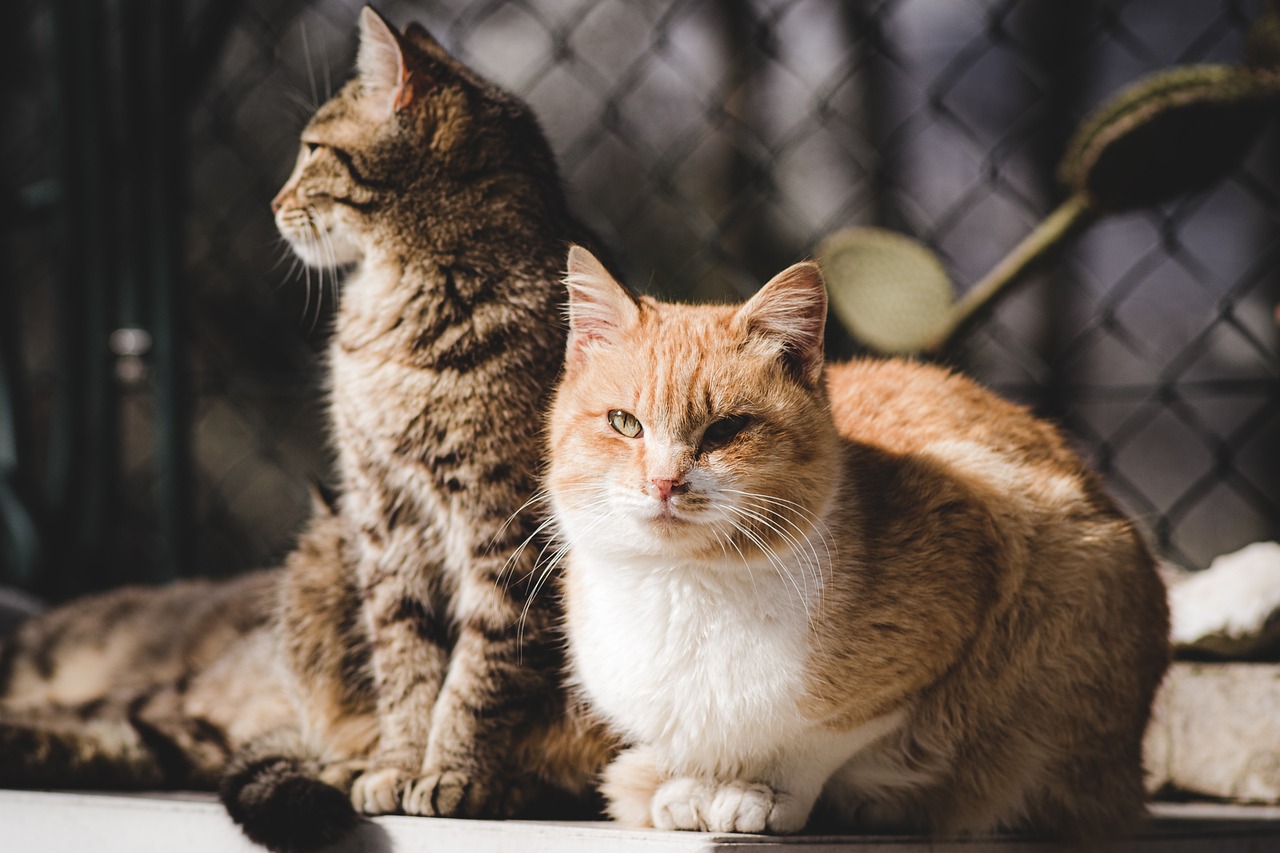
Using Anxiety-Relief Products
When it comes to easing your pet's anxiety during those thunderous storms, there are a plethora of anxiety-relief products available that can make a significant difference. Just like we might turn to a comforting blanket or a warm cup of tea when feeling stressed, our furry friends can benefit from similar aids. These products range from natural remedies to high-tech solutions, each designed to help your pet feel more at ease when the skies turn dark and the winds howl.
One of the most popular options is the use of pheromone diffusers. These devices release synthetic versions of the calming pheromones that mother dogs produce to soothe their puppies. By mimicking these natural scents, pheromone diffusers can create a calming atmosphere for your pet. Imagine walking into a room filled with the comforting scent of your childhood home; that’s the kind of effect these diffusers can have on your pet.
Another great option is calming collars. Similar to diffusers, these collars are infused with calming pheromones and can be worn throughout the day. They’re particularly handy for pets that may not stay in one place during a storm. Just think of it as a hug that your pet can wear! These collars can provide continuous relief, making them a fantastic addition to your pet's anxiety toolkit.
Additionally, there are various supplements available that can help alleviate anxiety. These often include ingredients like L-theanine, chamomile, and valerian root. Before introducing any new supplements, it’s wise to consult with your veterinarian. They can recommend the best options tailored to your pet’s specific needs. It’s like having a personalized recipe for your pet’s peace of mind!
| Product Type | Description | Pros | Cons |
|---|---|---|---|
| Pheromone Diffusers | Releases calming pheromones into the environment. | Easy to use, effective for many pets. | May take time to see results. |
| Calming Collars | Collars infused with calming pheromones. | Continuous relief, portable. | May not fit all sizes, effectiveness varies. |
| Supplements | Natural ingredients that promote relaxation. | Can be tailored to pet's needs. | Requires vet consultation, potential side effects. |
While these products can be incredibly helpful, it’s essential to remember that they work best in conjunction with other strategies, such as creating a safe space and employing calming techniques. Think of it as building a comprehensive wellness plan for your pet. Each product plays its role, contributing to an overall sense of security and comfort during those stormy nights.
Finally, always keep an open line of communication with your veterinarian. They can provide insights into which products may be the most effective for your pet’s specific anxiety triggers. After all, you wouldn’t want to try a new recipe without checking if you have all the right ingredients first!
By integrating these anxiety-relief products into your pet's routine, you’re not just helping them cope with storms; you’re enhancing their overall quality of life. Just like us, our pets thrive when they feel safe and secure, especially during unpredictable weather. So, gear up with these tools and watch your furry friend find their calm amidst the chaos!
- What are the signs of anxiety in pets during storms? Look for behaviors such as excessive barking, hiding, pacing, or destructive actions.
- How long does it take for anxiety-relief products to work? The effectiveness can vary; some may provide immediate relief while others might take a few days to show results.
- Can I combine different anxiety-relief products? Yes, many pet owners find success by using a combination of products, but always consult your vet first.
- Are there any side effects to be aware of? Some pets may experience mild side effects from supplements; consult your veterinarian for specific guidance.
Consulting with a Veterinarian
When it comes to addressing your pet's anxiety during storms, consulting with a veterinarian is a crucial step that should not be overlooked. These professionals possess the expertise and knowledge to guide you through various options that can help alleviate your furry friend's distress. Just like us, pets can experience overwhelming anxiety, and a vet can provide tailored solutions that suit your pet's individual needs.
During your visit, it’s important to discuss the specific symptoms your pet exhibits during storms. Does your dog hide in a corner? Does your cat refuse to eat? Sharing these details can help the vet better understand the severity of the anxiety and recommend appropriate treatments. Often, they may suggest a combination of behavioral therapy and medication to create the best outcome for your pet.
Here are some common treatment options your veterinarian might discuss:
- Medications: Anti-anxiety medications can provide immediate relief for pets experiencing severe anxiety. Your vet will determine the right medication and dosage based on your pet's size, age, and health status.
- Natural Supplements: There are various herbal remedies and supplements available that can help soothe anxious pets. These may include ingredients like valerian root or chamomile, which are known for their calming properties.
- Behavioral Modification: In some cases, your veterinarian may recommend working with a certified animal behaviorist to implement a structured training program aimed at reducing anxiety over time.
Remember, while over-the-counter options may seem tempting, it’s always best to consult with a veterinarian first. They can help you avoid potential risks associated with unregulated products and ensure that whatever treatment you choose is safe and effective for your pet.
Ultimately, the goal is to create a supportive environment for your pet, reducing their anxiety and helping them feel secure during storms. By collaborating with your veterinarian, you can develop a comprehensive plan that not only addresses immediate needs but also fosters long-term well-being for your beloved companion.
Q1: How can I tell if my pet is anxious during storms?
A: Common signs of anxiety in pets include hiding, excessive barking or meowing, trembling, loss of appetite, and destructive behavior. If you notice any of these signs, it may be time to consult with a veterinarian.
Q2: Are there any natural remedies for pet anxiety?
A: Yes, natural remedies such as herbal supplements, calming treats, and essential oils can help soothe anxious pets. However, it’s important to consult with a veterinarian before trying any new treatments.
Q3: Can my pet outgrow its anxiety?
A: While some pets may become more resilient to stressful situations over time, others may require ongoing support and management strategies to cope with their anxiety.
Q4: Is it safe to use medication for my pet’s anxiety?
A: Yes, when prescribed by a veterinarian, anxiety medications can be safe and effective. Always follow the vet's instructions regarding dosage and administration.
Behavioral Training Strategies
When it comes to helping our furry friends cope with the anxiety that storms can bring, can be a game changer. Just like humans, pets can learn to manage their fears through consistent training and positive reinforcement. You might be wondering, "How can I train my pet to feel more at ease during a storm?" Well, let’s dive into some effective techniques!
One of the most effective methods is desensitization. This involves gradually exposing your pet to the sounds and sensations associated with storms in a controlled environment. Start by playing recordings of thunder at a low volume while engaging your pet in a fun activity, like playing with their favorite toy or giving them treats. Slowly increase the volume over time, but always ensure that your pet is comfortable and not showing signs of distress. The goal here is to help them associate the sounds of storms with positive experiences.
Another powerful technique is counter-conditioning. This method focuses on changing your pet's emotional response to the anxiety-inducing stimuli. For instance, if your dog tends to hide during storms, you can encourage them to come to you for comfort instead. Use treats and praise to reward them for staying close to you when they hear thunder. Over time, they will start to associate your presence and the treats with the sound of thunder, which can significantly reduce their fear.
Incorporating calmness training into your routine can also be beneficial. Teaching your pet commands like "sit" and "stay" in a calm environment can help instill a sense of discipline and control. When a storm hits, you can use these commands to redirect their attention and help them focus on you rather than the anxiety-inducing sounds. Remember, consistency is key! Practice these commands regularly, and your pet will learn to find comfort in your guidance.
Additionally, consider using relaxation techniques during training sessions. For instance, gentle massage can help soothe your pet's nerves. Spend some time rubbing their back or neck, which can release tension and promote relaxation. You could also incorporate breathing exercises—yes, pets can benefit from deep breathing too! Encourage your pet to take slow, deep breaths by demonstrating it yourself. This can help create a calming atmosphere and teach them to regulate their own stress levels.
Lastly, positive reinforcement cannot be overstated. Whenever your pet exhibits calm behavior during a storm, reward them! This could be through treats, praise, or extra playtime. By reinforcing their calmness, you're teaching them that staying relaxed during storms leads to positive outcomes. Remember, patience is crucial. Every pet is different, and some may take longer to adjust than others.
In summary, addressing storm anxiety in pets through behavioral training strategies is not only effective but also strengthens the bond between you and your furry companion. By employing these techniques, you can help your pet navigate their fears and create a more peaceful environment for both of you during those stormy nights. Now, let’s address some common questions pet owners have regarding this topic in our Frequently Asked Questions section below.
- How long does it take to see results from behavioral training? Results can vary based on the individual pet, but consistency and patience are essential. Some pets may show improvement within a few sessions, while others might take weeks or even months.
- Can I combine behavioral training with anxiety-relief products? Absolutely! Many pet owners find success by using a combination of training techniques and calming products, such as pheromone diffusers or calming collars.
- Is it necessary to consult a veterinarian before starting behavioral training? While it's not mandatory, consulting a veterinarian can provide valuable insights, especially if your pet has severe anxiety. They can recommend appropriate training methods and products tailored to your pet's needs.
Frequently Asked Questions
- What are the signs that my pet is anxious during a storm?
Pets may exhibit various signs of anxiety during storms, including excessive barking, hiding, pacing, or destructive behavior. You might also notice them trembling or seeking comfort from you more than usual. Recognizing these signs early can help you take action to soothe them.
- How can I create a safe space for my pet during storms?
To create a safe space, find a quiet area in your home, such as a basement or interior room, away from windows and loud noises. Make it cozy by adding your pet's favorite blankets, toys, and perhaps an item of your clothing to provide comfort. This space should feel like a sanctuary for them during the storm.
- What calming techniques can I use for my anxious pet?
Calming techniques such as gentle massage, playing soothing music, or using breathing exercises can help relax your pet. You might even try to stay calm yourself, as pets often pick up on their owner's emotions. Creating a peaceful environment can significantly reduce their stress levels.
- Are there specific products that can help alleviate pet anxiety?
Yes! There are various anxiety-relief products available, such as pheromone diffusers, calming collars, and supplements designed to reduce anxiety in pets. These products can be effective in creating a more relaxed atmosphere for your furry friend during stormy weather.
- When should I consult a veterinarian about my pet's anxiety?
If your pet's anxiety is severe or persistent, it's a good idea to consult a veterinarian. They can provide guidance on potential medication options and suggest behavioral therapies that can help your pet cope better with storms and other anxiety-inducing situations.
- Can behavioral training help my pet with storm anxiety?
Absolutely! Behavioral training can be a powerful tool in helping pets manage their anxiety. Techniques such as desensitization and counter-conditioning can gradually help your pet become less fearful of storms over time. Consistency and patience are key to seeing positive results.










